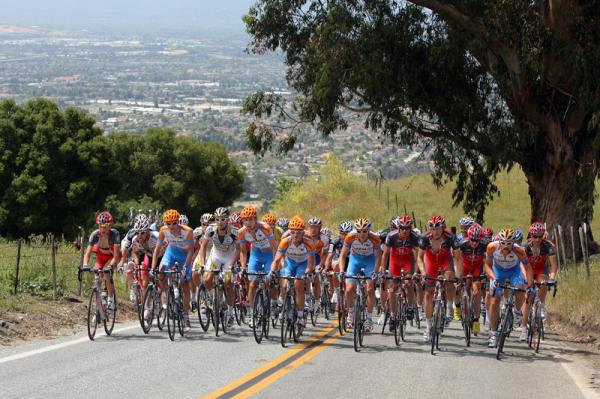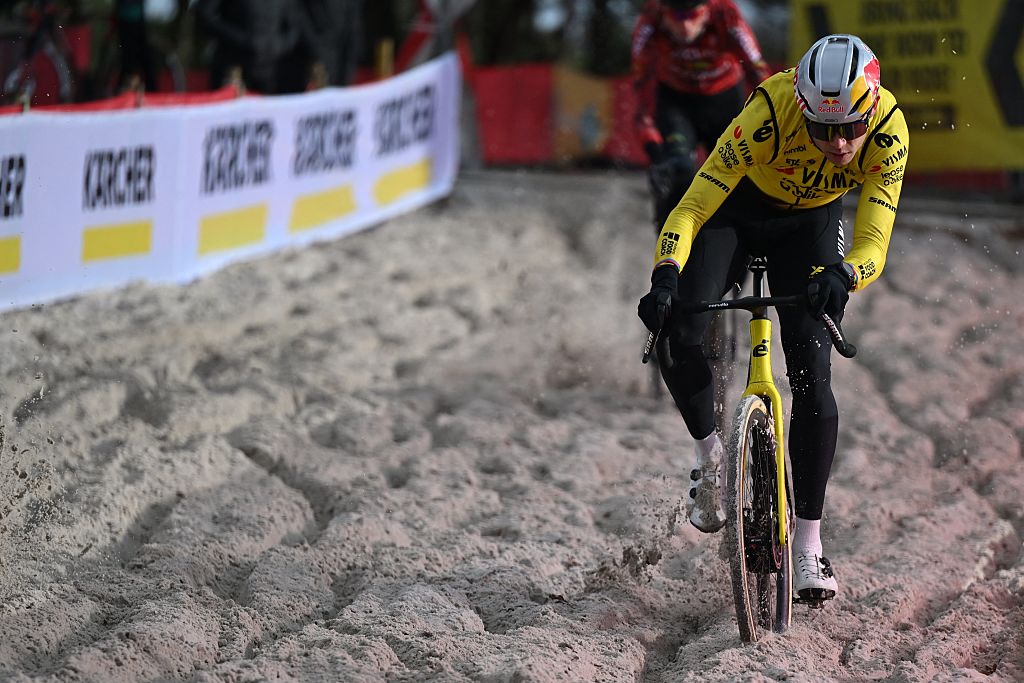Amgen Tour of California: Exploring the route possibilities
Where the 2011 edition could take fans and riders
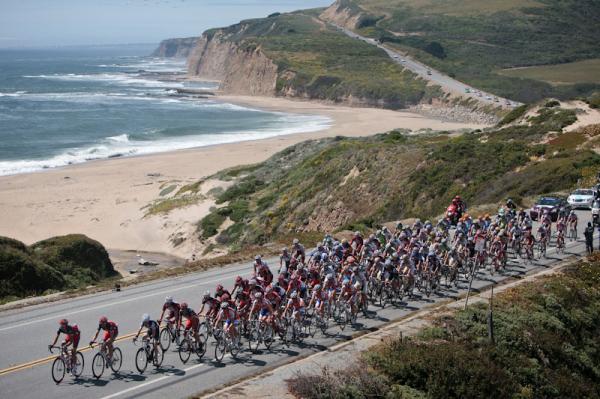
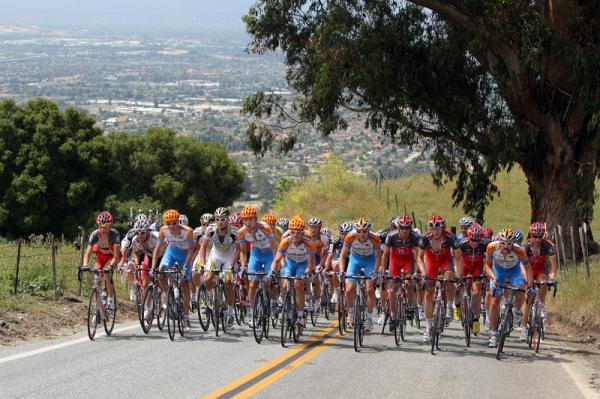
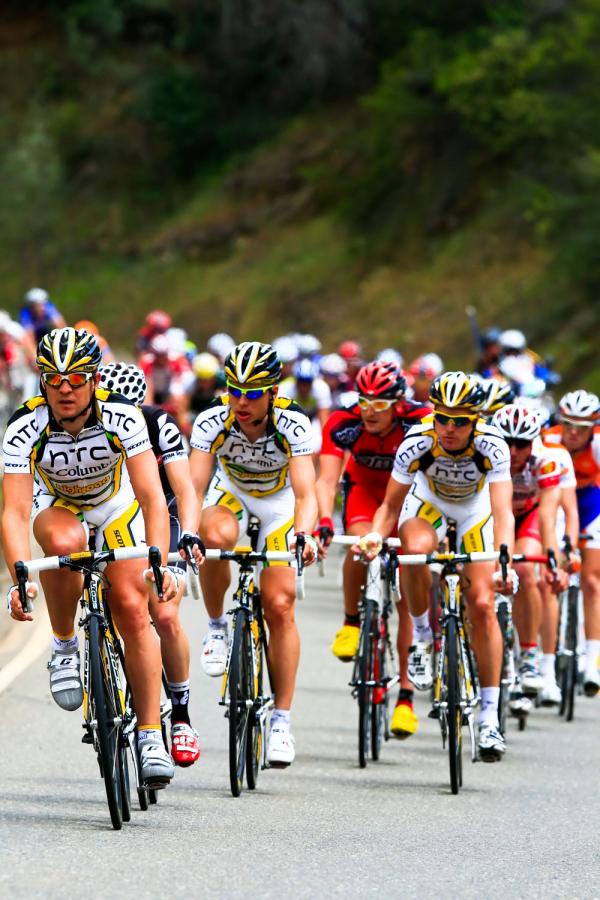
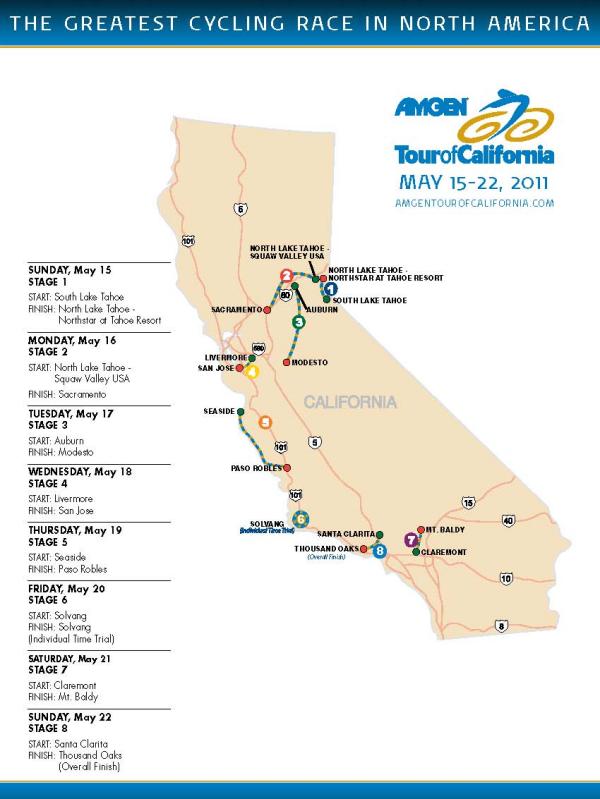
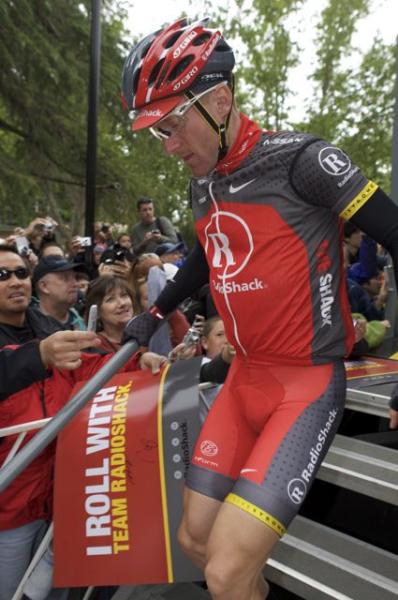
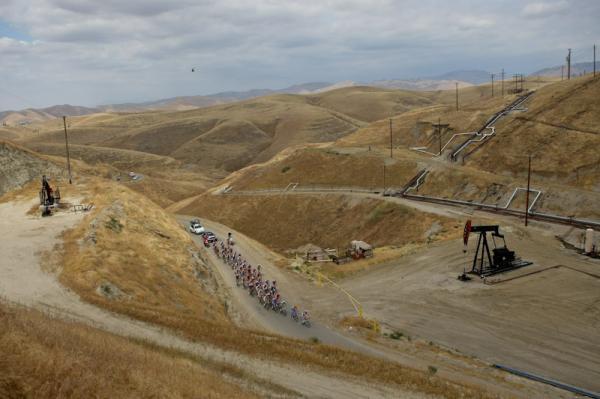

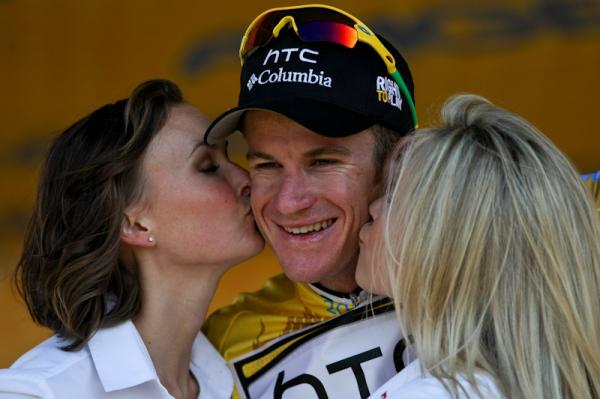
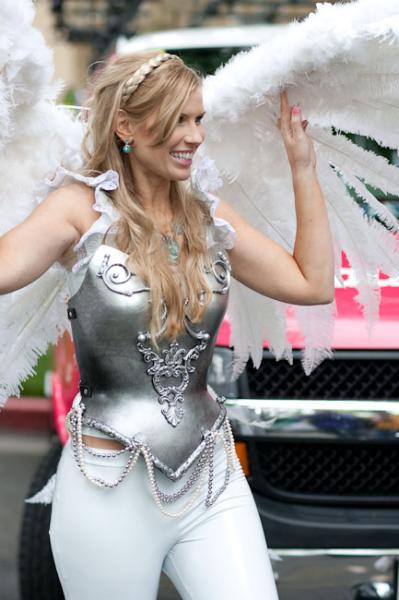
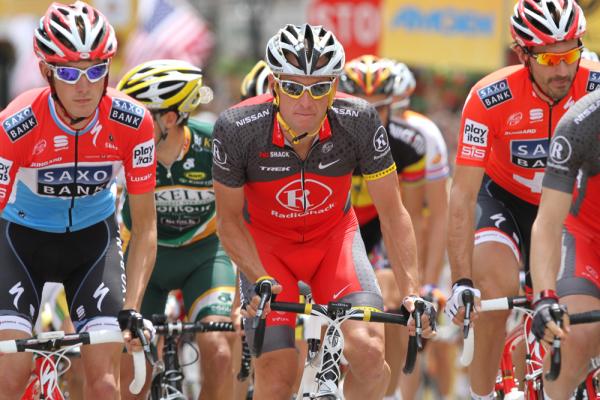
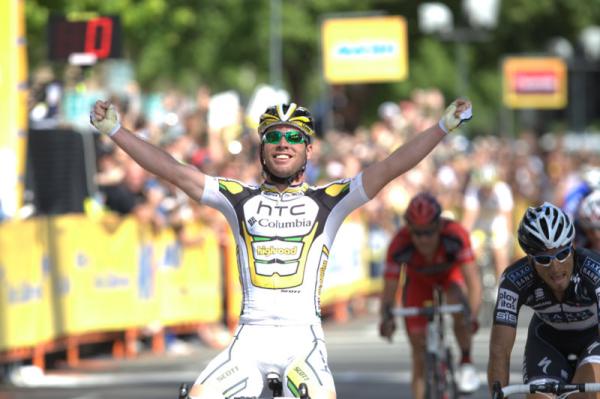
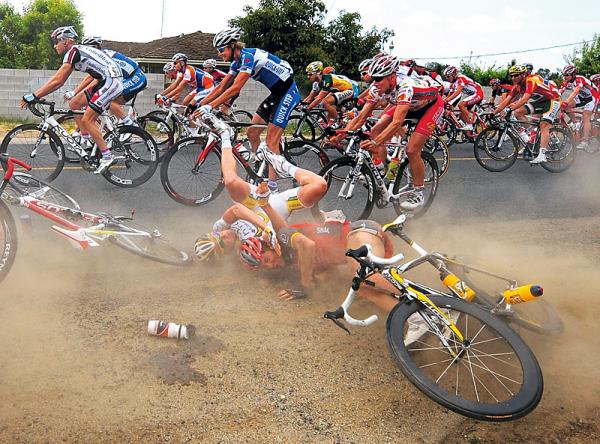
While the host cities for the 2011 Amgen Tour of California have been announced, the details of the routes won't be made public for several months. Some of the routes between the start and finish towns are pretty easy to guess, while others are open to some interesting speculation.
Since there is only one road around Lake Tahoe, the route for stage one is not much of a mystery. The riders will make one and-a-half clockwise loops around Lake Tahoe, starting in South Shore and finishing on a short, but very steep, climb to the North Star at Tahoe ski resort.
Stage two heads from the Squaw Valley ski resort, site of the 1960 Winter Olympics and the first 'Miracle on Ice', and drops over 6,000 vertical feet to the finish in the state capital of Sacramento. Given that it is almost 100 miles between the two cities as the crow flies, to keep the mostly downhill stage below 150 miles the only option is to head through Truckee, over the Donner Pass on Highway 40 - in excess of 7,000 foot - and then jump on Interstate 80 for a few miles before exiting on Highway 20 to Nevada City.
It's 70 miles from Squaw Valley to Nevada City which was the start of the first stage of the 2009 ATOC. Last year's route from Nevada City to Sacramento was a 104-mile stage which means that organisers will not be using the same route in 2011.
Look for a more direct shot to Sacramento, but a monster stage of over 150 miles is a real possibility. Whatever route is taken from Nevada City to Sacramento, the final miles will be flat and should see the first sprint finish of the 2011 Tour of California.
Team BMC directeur sportif and Sacramento resident Mike Sayers weighs in on the stage: "Once they get to Auburn there are a ton of more direct routes to get to downtown [Sacramento]. If I was to go tempo pace on my own I can go from Auburn to downtown in about two and-a-half hours hours so they could do it in two hours or less if need be. I think they want to go through Folsom, so put that on the route map."
Stage three from Auburn to Modesto will most likely follow historic Highway 49 for most of the stage, traversing through much of the gold country which shaped the early day of California's statehood. Highway 49 features a relentless string of small-and medium-size climbs as it crosses the many canyons carved by the Sierra Nevada mountains' major rivers and drainages.
The latest race content, interviews, features, reviews and expert buying guides, direct to your inbox!
It is about 100 miles on Highway 49 from Auburn to Sonora then 50 miles from Sonora to Modesto, making another monster stage. Look for the race to exit Highway 49 before Sonora, possibly around the town of San Andreas for a shorter, more manageable, route. Either way, the final 30-50 miles will be mostly flat, setting up for yet another Modesto sprint finish.
"I am wondering if stage three might head from Auburn down to Folsom then through the flats for a sprint in Stockton then to Modesto. It is about 125 miles, I've done it before and would be a fast stage... that being says, I hope that we go down 49," says Auburn resident and Team Type 1 rider Chris Jones.
Another trip up Sierra Road
Stage four from Livermore to San Jose looks to be a repeat of the business end of a similar stage from Modesto to San Jose held in 2007. The stage will probably drop over into the San Joaquin Valley before heading up Del Puerto Canyon Road outside Patterson.
The 4,000-foot Mount Hamilton is quite steep in its last five miles but the final ascent of the day, Sierra Road, is close enough to the finish in downtown San Jose to cause more concern for the racers.
Team Bissel rider Ben Jacques Maynes, who has ridden every Amgen Tour of California and lives south of San Jose, offers his thoughts: "If I had my choice, I would run the race through Morgan Territories, Mines Road, [Mount] Hamilton into San Jose, then loop around Clayton Road two to three times.
"As another, harder, option I would come down Quimby [Road], run south to the bottom of Metcalf [Road] then come back north on White [Road] and back up Quimby for a summit finish."
Stage five from Seaside to Paso Robles follows the familiar terrain of California's coastal gem, Highway 1, for the first 100 miles to Cambria. However, unlike years past there is no flat run-in to finish. Instead, the riders will face one of two possible climbs on their way to Paso Robles.
The most likely candidate is Highway 46 which climbs 1700 feet in about five miles. It is 20 miles of small, rolling hills and descending to the finish; a motivated group of riders could stay away and gain time here. This could be a sleeper stage of the race for the overall contenders.
The other option is Santa Rosa Creek Road which parallels Highway 46 several miles north but features a 3/4 mile section of 17-20 percent right near its top before it merges with Highway 46.
"Going up Highway 46 seems like the logical approach. It is a consistent climb similar to Hwy 154 which we rode the year we finished into Santa Barbara. It's about 20 miles of rolling roads back into Paso [Robles] from the top," says Spidertech pro Lucas Euser, who went to college at the nearby Cal Poly San Luis Obispo.
"The approach to the climb is calm and it's a wide two lane highway for plenty of room to move around, but if ridden fast the climb can definitely shed some weight from the peloton.
"By no means is it a flat run in. This stage seems perfect for breakaway specialists either way they decide to take it, especially being the day before the TT and the day after what I'm guessing is going to be a difficult stage into San Jose," adds Euser.
There is not much to say about the Solvang time trial on stage six. Unless the course if lengthened considerably, it will still fail to include much climbing. That doesn't mean it won't challenge the riders. It just means that the time gaps won't be as big as they could be on a more difficult course.
A first for the Tour of California
The penultimate day, stage seven, from Claremont to Mount Baldy, will include the first ever summit finish in the ATOC. The route is rumoured to include both the Glendora Mountain Road and Glendora Ridge Road before tackling the final 2500' to the base of the Mount Baldy Ski Area which tops out at 6,200 feet above sea level.
The most direct route from Claremont to the Mount Baldy Ski Area - which includes Glendora Mountain Road and Glendora Ridge Road - is less than 50 miles, so the race organisers are either going to have a very short, but action packed stage, or they will have to include some more territory.
Finding suitable roads in that area of the San Gabriel Valley will be difficult. One option is to head west toward Pasadena and climb Highway 2 to the Angeles Crest Highway, a route that was not possible last year due to the floods and mudslides resulting from the massive Station Fire.
After about 20 miles on the Angeles Crest Highway, the race could descend Highway 39 down to the start of Glendora Mountain Road and continue to the Mount Baldy Ski Area from there.
This option would create a very exciting stage with well over 10,000 feet of climbing. The only problem is that the final five miles of Highway 39 to where it intersects the Angeles Crest Highway is currently closed to car traffic due to rockfall danger. If the race organisers can figure out a way to get this section open for race day only, it would make for a totally epic stage.
Former US Postal Service/Discovery Channel rider Tony Cruz, who trained for his grand tour appearances in this area, offers several route suggestions: "The riders would do a couple of laps around Bonelli Park then head to Highway 39 to East Fork Road to the back side of Glendora Mountain Road.
"Next, drop down to Claremont to Bonelli Park for one more lap, then up the front side of Glendora Mountain Road. Right at the top across Glendora Ridge Road to Mt Baldy Road and race to the top.
"Claremont to La Canada/Flintridge and up Highway 2 to Highway 39 and the finish just like what you wrote," is Cruz's second route suggestion.
Stage eight is slated to start in Santa Clarita and end at Amgen World Headquarters in Thousand Oaks. There are a number of possibilities for this, the final stage, although after the climb to Mount Baldy there will probably be no need for more fireworks.
The short but steep ascent of Balcom Canyon was part of the early editions of the race. A loop or two of last year's terrific Rock Store circuit would also add a spark to the race's 2011 edition and provide the perfect ending.
